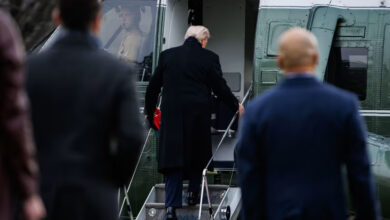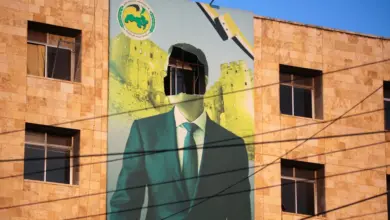The uprising in Syria is becoming increasingly violent. The UN High Commissioner for Human Rights has stated that the regime’s actions likely constitute crimes against humanity. This is particularly evident with the latest onslaught on Homs, an area regarded as the epicenter for the armed opposition. Although it is extremely difficult to get reliable information on what is happening, it is clear the offensive that intensified on 3 February is faced with immense brutality.
After the demonstrations started in March last year, when the anti-regime sentiment clearly had become a nationwide force, many observers concluded that President Bashar al-Assad would not be able to rehabilitate himself politically, that the Arab Spring had made it impossible for him to sustain his regime. Now, many have concluded that his demise is inevitable; however, the important quandary is the protraction of the conflict itself.
What is loosely referred to as the Free Syrian Army has carried out numerous attacks. However, the context of recent events show other armed groups emerging as well. The occurrences of three suicide attacks so far further indicate the involvement of foreign groups. While a vast number of the Syrian population appears to be opposed to the regime, the latter still has some support from various segments of the society, particularly minority communities. Since more than 70 percent of the Syrian population is Sunni, the conflict is often cast in sectarian terms, sharing commonalities with Iraq and Lebanon.
Far too often conflicts in the region are analyzed through the sectarian lens. The reality, however, is not that clear; even though Alawites predominate important positions in the security and military apparatuses, there are also well-placed Sunnis in the establishment that the regime cannot afford to lose. Moreover, geography and social class matter in determining who supports the regime and who opposes it — and who simply refrains from actively taking part in the uprising. For example, the Sunni merchant class and generally the well-to-do elite in places such as Damascus and Aleppo do not appear to have jumped the ship. In other words, there are still people sitting on the fence. Nevertheless, it seems the conflict is in danger of taking on a sectarian nature, and herein are the signs reminiscent of Iraq and the long civil war of Lebanon. Glancing at the polarized stances on the international arena, many would say it looks like what lies ahead is drawn-out proxy warfare.
With the Arab delegation to Syria not yielding tangible results, the Arab initiative was taken to the UN Security Council, where a resolution was subsequently vetoed by Russia and China. Then, a resolution that is not legally binding was passed in the UN General Assembly. Russia and China also voted against this resolution because it did not lay out demands to the armed opposition. The simultaneous pressure exerted on Syria and Iran seems to mirror the wider contest for regional influence. What we are witnessing is a contest between two opposing blocks: Russia and China on one side and US with Gulf states such as Saudi Arabia and Qatar on the other.
Russia has had long-standing ties with Syria since the Cold War era. Syria buys Russian-manufactured weapons and hosts a naval base, which is Russia’s only base on the Mediterranean. It can be surmised that the veto must be indicative of how Russia sees the status quo of the Syrian regime. Had a strong and reasonably representative leadership emerged from a unified Syrian opposition, one would think Russia’s interests could have been guaranteed. In other words, the bottom line is that Russia may see Bashar al-Assad’s demise as inevitable down the road, but it does not see a regime collapse as imminent, and that it is unimpressed by the current opposition.
If Libya — although a very different case — is to be instructive, it showed us that poorly organized militias cannot defeat a professional army. And the Free Syrian Army does not currently appear to be much more than a poorly organized militia. The situation was still difficult in Libya even with the aid of NATO and the fact that a large portion of the Libyan territory had fallen out of government control relatively early in the conflict.
The situation in Syria is a deadlock; the regime sees itself as having no option but to continue its existential battle, while declaring a reform process, including the drafting of a new constitution, which seems irremediably out of sync with the gravity of the situation on the ground. This situation is likely to prevail until a concrete threat of external military intervention looms on the horizon or the opposition becomes unified, changes tactics and engages with the regime politically.
The opposition is divided both internally in Syria as well as externally. When it comes to the exiled opposition, it is clear that it spawned with the arrival of the Arab Spring, when a wide range of different groups came together when troubles mounted in Syria.
This is not new. The last time people pondered Bashar al-Assad’s demise, an exile opposition group, the National Salvation Front, came into being. This occurred after a rough period in 2005 to 2006 when numerous events had been chipping away at Syria’s standing in the region. One recalls, for example, the Security Council Resolution 1559 (as well as the US sanctions preceding it), the assassination of Rafiq al-Hariri and the UN-mandated investigation chasing after the supposed Syrian perpetrators, and, lastly, the belittling withdrawal of the Syrian army from Lebanese territory.
Significantly, all of this coincided with Bashar al-Assad’s first period as the president of Syria. All these events spawned an opposition in exile with the strange alliance between the former renegade vice president, Abdul Halim Khaddam, and Ali Sadreddine Bayanouni from the Muslim Brotherhood — an affair that did not last very long. While the Muslim Brotherhood might be strong in exile, it is not necessarily so internally in Syria, having been organizationally absent for three decades.
The current, larger group in exile, the Syrian National Council, has been also riddled with internal disputes. The problems seem to stem not only from its composition, as it comprises both secularists and Islamists along with a wide range of ideologically diverse individuals, but also from the difficult balancing acts between initially embracing the uprising as a peaceful revolution and then positioning itself vis-à-vis the increasingly armed parties of the revolt. One cannot have both violence and non-violence as a rallying cry. Now, it seems the national council has finally settled on supporting armed resistance through supporting the Free Syrian Army.
Running an opposition in exile is excruciatingly difficult, especially when it is comprised of disparate elements that cling together only for the prospect of bringing down the regime. The opposition inside Syria had at critical times protested against the exiled opposition that speaks comfortably on behalf of those living in Syria and putting themselves at physical risk to protest and struggle. It should also be added that internally, the Syrian opposition is not wholly in favor of an armed revolt.
A key question that will determine the outcome of this conflict is whether a representative leadership will emerge from the various strands of the opposition in Syria. The regime always kept the space for the opposition tiny, controlled and dangerous for those who join it. With time, such leadership might come to being, but sadly the overall impression of the situation points in the direction of a protracted conflict whose militarization cannot be managed.
Kristian Boysen is currently an adviser for the Norwegian Refugee Council. He worked for the United Nations in Syria prior to the uprising.




